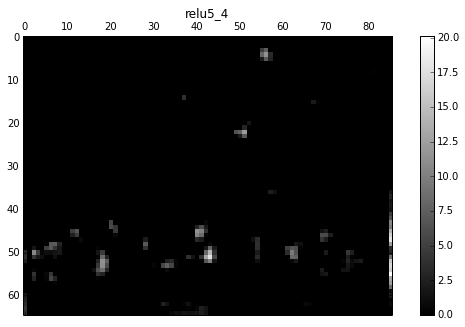Use VGG network
import scipy.io
import numpy as np
import os
import scipy.misc
import matplotlib.pyplot as plt
import tensorflow as tf
%matplotlib inline
print ("Packages loaded")
Packages loaded
Define network
def net(data_path, input_image):
layers = (
'conv1_1', 'relu1_1', 'conv1_2', 'relu1_2', 'pool1',
'conv2_1', 'relu2_1', 'conv2_2', 'relu2_2', 'pool2',
'conv3_1', 'relu3_1', 'conv3_2', 'relu3_2', 'conv3_3',
'relu3_3', 'conv3_4', 'relu3_4', 'pool3',
'conv4_1', 'relu4_1', 'conv4_2', 'relu4_2', 'conv4_3',
'relu4_3', 'conv4_4', 'relu4_4', 'pool4',
'conv5_1', 'relu5_1', 'conv5_2', 'relu5_2', 'conv5_3',
'relu5_3', 'conv5_4', 'relu5_4'
)
data = scipy.io.loadmat(data_path)
mean = data['normalization'][0][0][0]
mean_pixel = np.mean(mean, axis=(0, 1))
weights = data['layers'][0]
net = {}
current = input_image
for i, name in enumerate(layers):
kind = name[:4]
if kind == 'conv':
kernels, bias = weights[i][0][0][0][0]
kernels = np.transpose(kernels, (1, 0, 2, 3))
bias = bias.reshape(-1)
current = _conv_layer(current, kernels, bias)
elif kind == 'relu':
current = tf.nn.relu(current)
elif kind == 'pool':
current = _pool_layer(current)
net[name] = current
assert len(net) == len(layers)
return net, mean_pixel, layers
print ("Network for VGG ready")
Network for VGG ready
Define functions
def _conv_layer(input, weights, bias):
conv = tf.nn.conv2d(input, tf.constant(weights), strides=(1, 1, 1, 1),
padding='SAME')
return tf.nn.bias_add(conv, bias)
def _pool_layer(input):
return tf.nn.max_pool(input, ksize=(1, 2, 2, 1), strides=(1, 2, 2, 1),
padding='SAME')
def preprocess(image, mean_pixel):
return image - mean_pixel
def unprocess(image, mean_pixel):
return image + mean_pixel
def imread(path):
return scipy.misc.imread(path).astype(np.float)
def imsave(path, img):
img = np.clip(img, 0, 255).astype(np.uint8)
scipy.misc.imsave(path, img)
print ("Functions for VGG ready")
Functions for VGG ready
Run
cwd = os.getcwd()
VGG_PATH = cwd + "/data/imagenet-vgg-verydeep-19.mat"
IMG_PATH = cwd + "/images/cat.jpg"
input_image = imread(IMG_PATH)
shape = (1,) + input_image.shape
with tf.Graph().as_default(), tf.Session() as sess:
image = tf.placeholder('float', shape=shape)
nets, mean_pixel, all_layers = net(VGG_PATH, image)
input_image_pre = np.array([preprocess(input_image, mean_pixel)])
layers = all_layers
for i, layer in enumerate(layers):
print "[%d/%d] %s" % (i+1, len(layers), layer)
features = nets[layer].eval(feed_dict={image: input_image_pre})
print " Type of 'features' is ", type(features)
print " Shape of 'features' is %s" % (features.shape,)
if 1:
plt.figure(i+1, figsize=(10, 5))
plt.matshow(features[0, :, :, 0], cmap=plt.cm.gray, fignum=i+1)
plt.title("" + layer)
plt.colorbar()
plt.show()
[1/36] conv1_1
Type of 'features' is <type 'numpy.ndarray'>
Shape of 'features' is (1, 1026, 1368, 64)
/usr/lib/pymodules/python2.7/matplotlib/collections.py:548: FutureWarning: elementwise comparison failed; returning scalar instead, but in the future will perform elementwise comparison
if self._edgecolors == 'face':
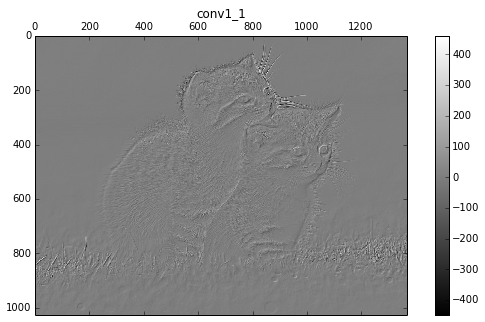
[2/36] relu1_1
Type of 'features' is <type 'numpy.ndarray'>
Shape of 'features' is (1, 1026, 1368, 64)
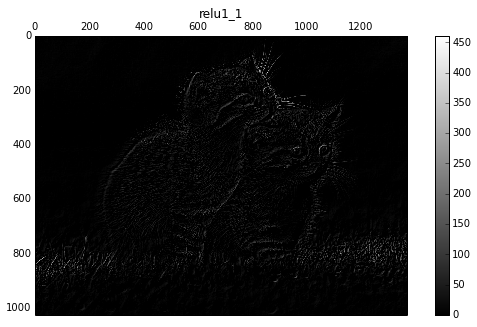
[3/36] conv1_2
Type of 'features' is <type 'numpy.ndarray'>
Shape of 'features' is (1, 1026, 1368, 64)
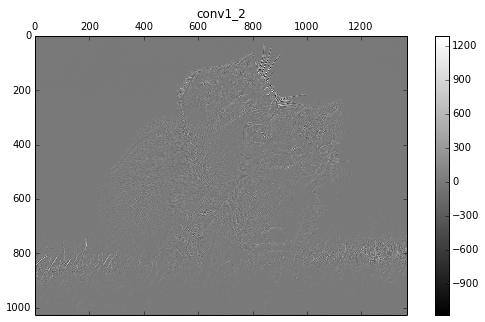
[4/36] relu1_2
Type of 'features' is <type 'numpy.ndarray'>
Shape of 'features' is (1, 1026, 1368, 64)
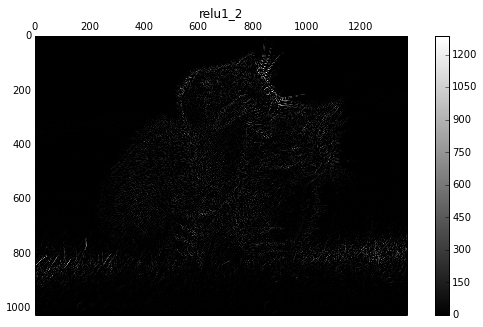
[5/36] pool1
Type of 'features' is <type 'numpy.ndarray'>
Shape of 'features' is (1, 513, 684, 64)
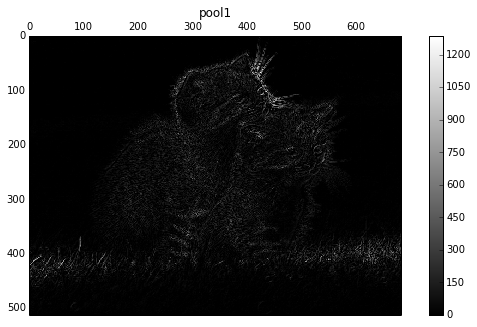
[6/36] conv2_1
Type of 'features' is <type 'numpy.ndarray'>
Shape of 'features' is (1, 513, 684, 128)
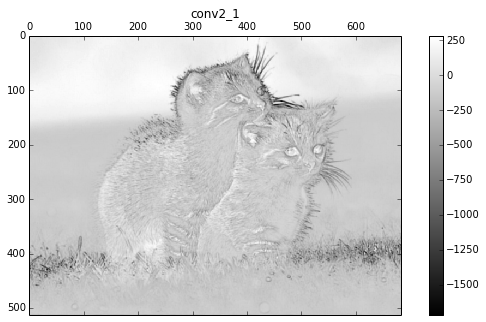
[7/36] relu2_1
Type of 'features' is <type 'numpy.ndarray'>
Shape of 'features' is (1, 513, 684, 128)
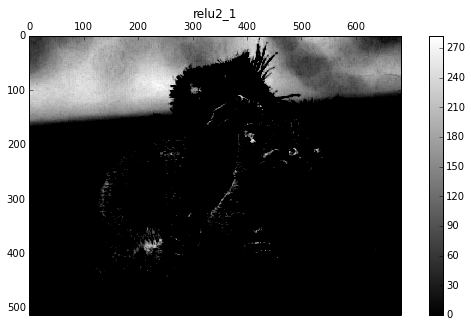
[8/36] conv2_2
Type of 'features' is <type 'numpy.ndarray'>
Shape of 'features' is (1, 513, 684, 128)
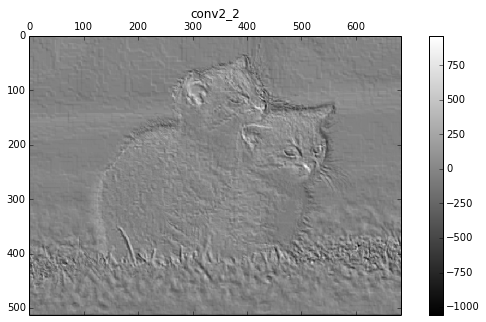
[9/36] relu2_2
Type of 'features' is <type 'numpy.ndarray'>
Shape of 'features' is (1, 513, 684, 128)
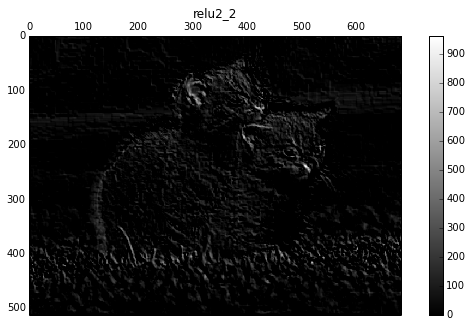
[10/36] pool2
Type of 'features' is <type 'numpy.ndarray'>
Shape of 'features' is (1, 257, 342, 128)
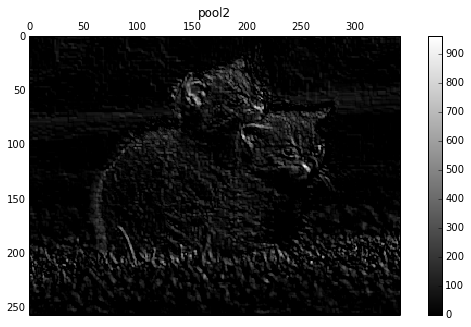
[11/36] conv3_1
Type of 'features' is <type 'numpy.ndarray'>
Shape of 'features' is (1, 257, 342, 256)
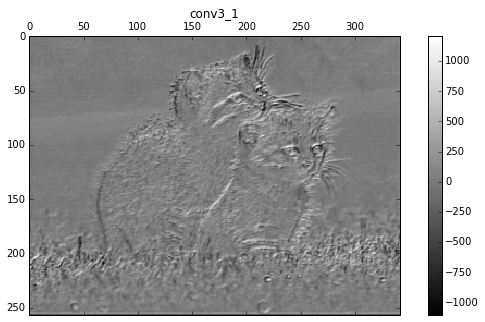
[12/36] relu3_1
Type of 'features' is <type 'numpy.ndarray'>
Shape of 'features' is (1, 257, 342, 256)
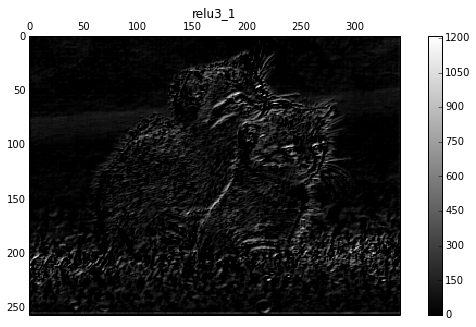
[13/36] conv3_2
Type of 'features' is <type 'numpy.ndarray'>
Shape of 'features' is (1, 257, 342, 256)
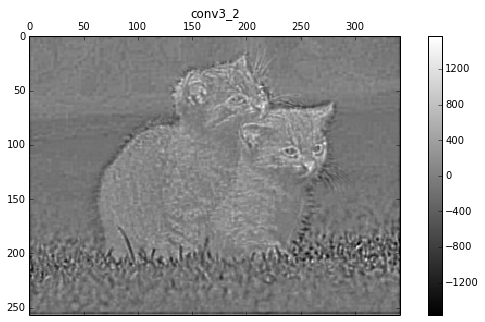
[14/36] relu3_2
Type of 'features' is <type 'numpy.ndarray'>
Shape of 'features' is (1, 257, 342, 256)

[15/36] conv3_3
Type of 'features' is <type 'numpy.ndarray'>
Shape of 'features' is (1, 257, 342, 256)
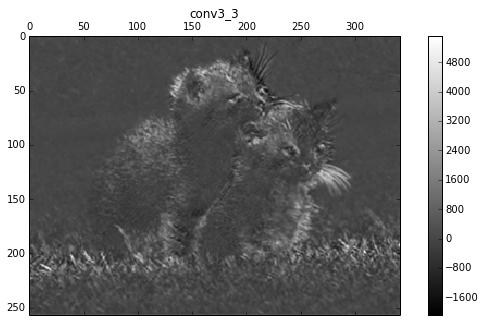
[16/36] relu3_3
Type of 'features' is <type 'numpy.ndarray'>
Shape of 'features' is (1, 257, 342, 256)
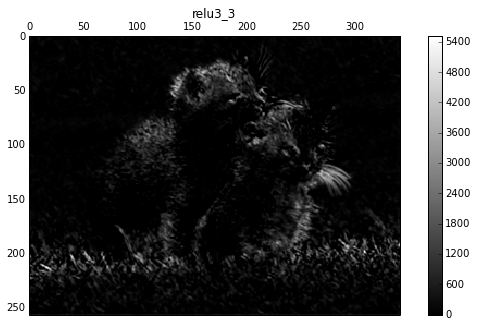
[17/36] conv3_4
Type of 'features' is <type 'numpy.ndarray'>
Shape of 'features' is (1, 257, 342, 256)
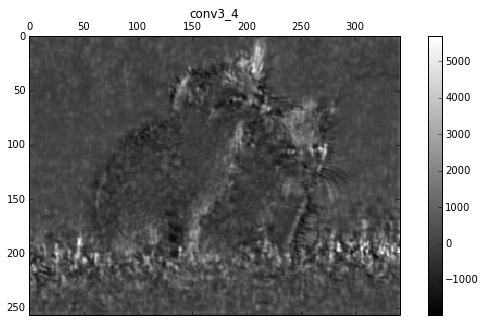
[18/36] relu3_4
Type of 'features' is <type 'numpy.ndarray'>
Shape of 'features' is (1, 257, 342, 256)
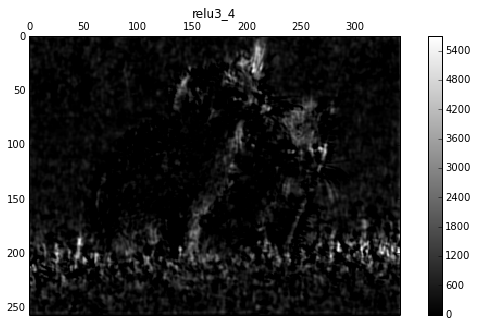
[19/36] pool3
Type of 'features' is <type 'numpy.ndarray'>
Shape of 'features' is (1, 129, 171, 256)
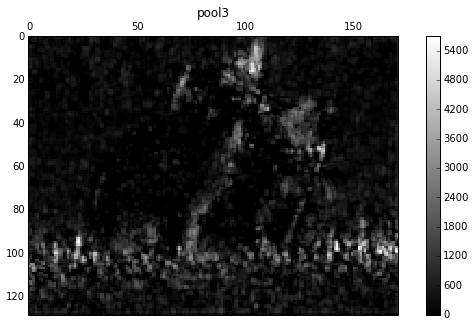
[20/36] conv4_1
Type of 'features' is <type 'numpy.ndarray'>
Shape of 'features' is (1, 129, 171, 512)
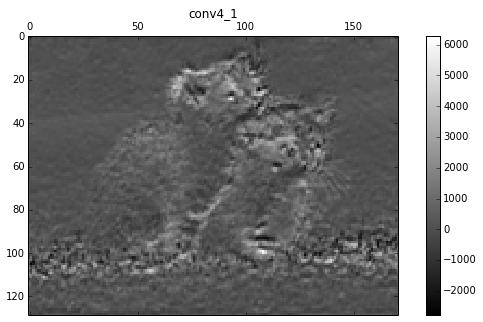
[21/36] relu4_1
Type of 'features' is <type 'numpy.ndarray'>
Shape of 'features' is (1, 129, 171, 512)
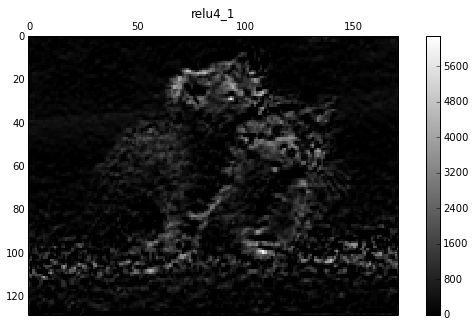
[22/36] conv4_2
Type of 'features' is <type 'numpy.ndarray'>
Shape of 'features' is (1, 129, 171, 512)
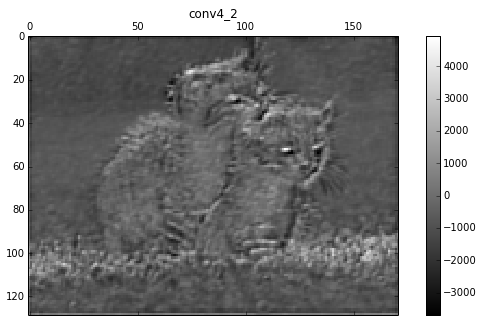
[23/36] relu4_2
Type of 'features' is <type 'numpy.ndarray'>
Shape of 'features' is (1, 129, 171, 512)
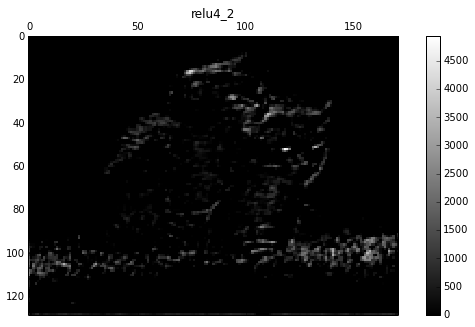
[24/36] conv4_3
Type of 'features' is <type 'numpy.ndarray'>
Shape of 'features' is (1, 129, 171, 512)
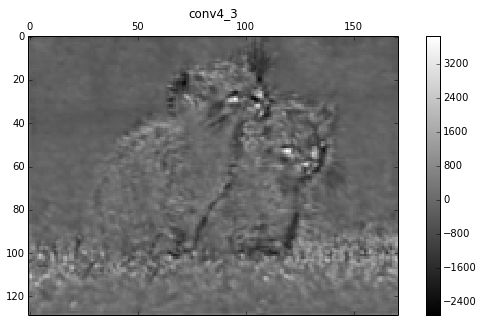
[25/36] relu4_3
Type of 'features' is <type 'numpy.ndarray'>
Shape of 'features' is (1, 129, 171, 512)
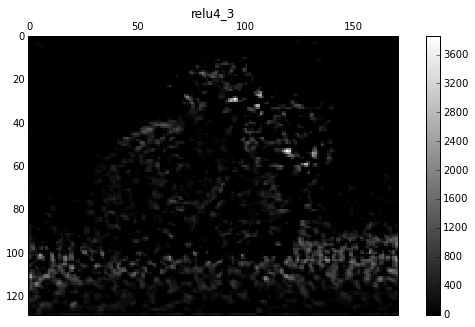
[26/36] conv4_4
Type of 'features' is <type 'numpy.ndarray'>
Shape of 'features' is (1, 129, 171, 512)
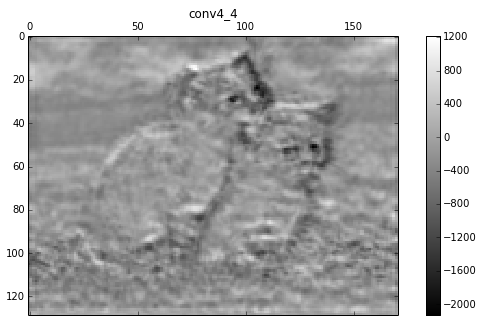
[27/36] relu4_4
Type of 'features' is <type 'numpy.ndarray'>
Shape of 'features' is (1, 129, 171, 512)
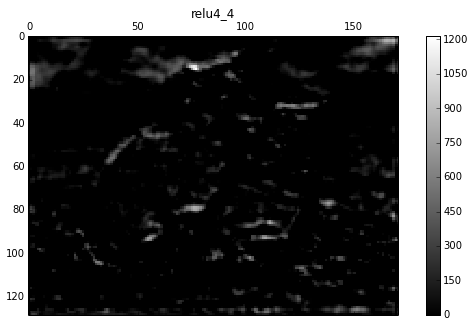
[28/36] pool4
Type of 'features' is <type 'numpy.ndarray'>
Shape of 'features' is (1, 65, 86, 512)
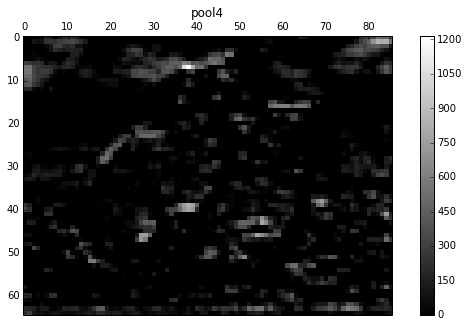
[29/36] conv5_1
Type of 'features' is <type 'numpy.ndarray'>
Shape of 'features' is (1, 65, 86, 512)
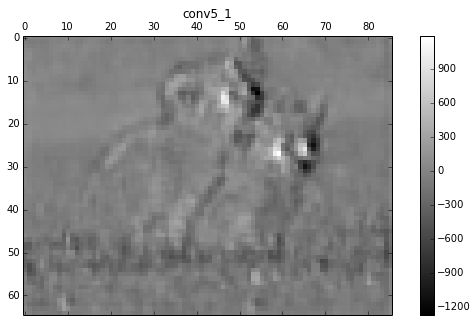
[30/36] relu5_1
Type of 'features' is <type 'numpy.ndarray'>
Shape of 'features' is (1, 65, 86, 512)
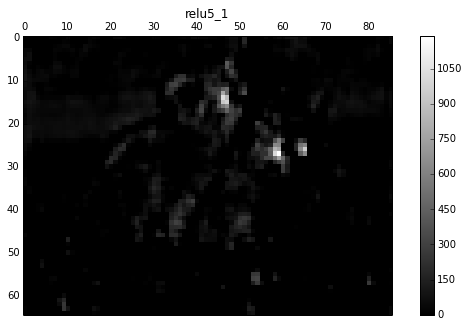
[31/36] conv5_2
Type of 'features' is <type 'numpy.ndarray'>
Shape of 'features' is (1, 65, 86, 512)
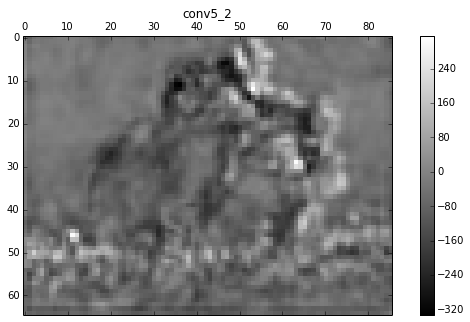
[32/36] relu5_2
Type of 'features' is <type 'numpy.ndarray'>
Shape of 'features' is (1, 65, 86, 512)
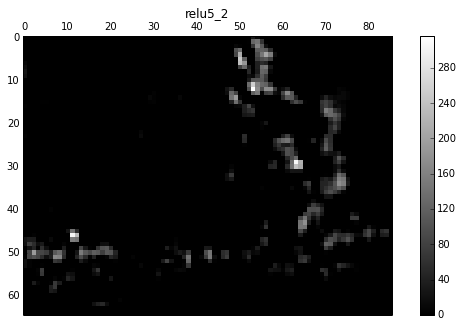
[33/36] conv5_3
Type of 'features' is <type 'numpy.ndarray'>
Shape of 'features' is (1, 65, 86, 512)
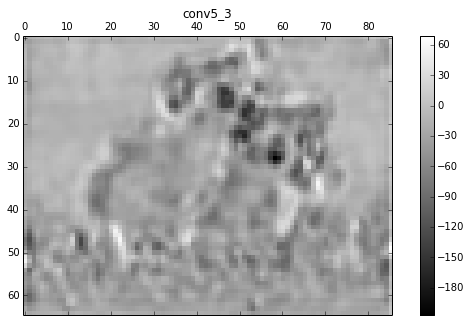
[34/36] relu5_3
Type of 'features' is <type 'numpy.ndarray'>
Shape of 'features' is (1, 65, 86, 512)
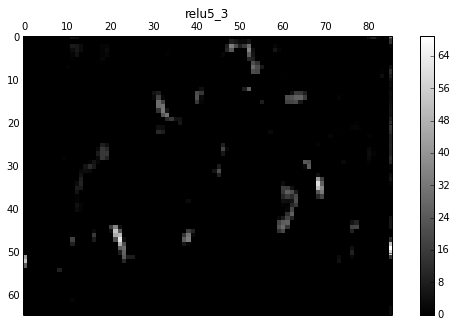
[35/36] conv5_4
Type of 'features' is <type 'numpy.ndarray'>
Shape of 'features' is (1, 65, 86, 512)
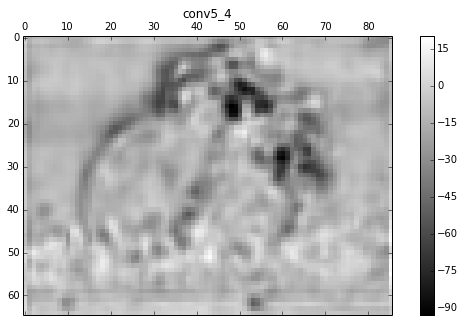
[36/36] relu5_4
Type of 'features' is <type 'numpy.ndarray'>
Shape of 'features' is (1, 65, 86, 512)
